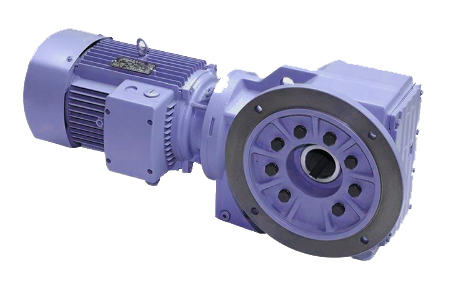Technical Requirements and Testing Methods for Gearboxes
Gearboxes, which are essential components in many mechanical systems, must meet stringent technical standards to ensure stable, reliable, and safe operation. The following outlines the key technical requirements for gearboxes, along with the corresponding testing methods.
Technical Requirements for Gearboxes
Surface Quality:
The outer surface of the gearbox should be smooth, flat, and free from obvious defects or cracks.Sealing Requirements:
No oil leakage is allowed at the joints or sealing areas of the gearbox.Fastening and Connection:
All fasteners and connecting components must be properly tightened with no signs of loosening to prevent accidents during operation.Smooth Input Shaft Operation:
The input shaft must run smoothly without any signs of sticking or irregularities.Performance under Rated Conditions:
When operating at the rated speed and load, the noise level should be ≤80 dB(A), the temperature rise should be ≤65°C, and the maximum oil temperature should not exceed 95°C.Transmission Efficiency and Load Capacity:
The gearbox’s transmission efficiency and load capacity should comply with the requirements specified in GB/T 16444.Worm Gear and Worm Contact:
The contact pattern of the worm gear and worm teeth should meet the necessary standards to ensure proper meshing.Axial Play:
The axial play between the worm shaft and the worm should conform to the specified range to avoid issues during operation.
Testing Methods for Gearboxes
Load Testing:
After the gearbox has passed initial inspection, it should undergo load testing to verify its performance under operational conditions.Data Recording:
During the load test, key parameters such as oil temperature, test time, torque, and speed should be recorded every 10 minutes.Stepwise Load Testing:
At rated speed, the gearbox should be subjected to increasing loads at 25%, 50%, 75%, 100%, 110%, and 125% of the rated torque. This stepwise loading test is essential to assess the gearbox’s ability to handle varying loads.Heat Load Test:
During the thermal load test, the oil sump temperature should stabilize for at least two hours, and the temperature must remain within the specified limits. No oil leakage should occur at any of the sealed parts.Bidirectional Operation Testing:
If the gearbox is designed for bidirectional operation or if the rotation direction is not clearly labeled, it must undergo tests in both forward and reverse directions to ensure the rotation direction aligns with the intended operational direction.
Acceptance Criteria
Calibration of Instruments and Gauges:
All testing instruments and gauges must be calibrated to ensure accuracy in measurements.Inspection and Acceptance by Manufacturer:
The quality inspection of the gearbox is the responsibility of the manufacturer’s quality control department, which will issue a certificate of conformity upon successful inspection.Sampling for Mass Production:
For mass-produced gearboxes of the same specification, a 10% sample can be tested. If the sample fails, an additional 20% should be tested. If the failure rate persists, all units in the batch should undergo full testing.
Inspection Items
- Paint and Appearance Quality:
The appearance of the gearbox, including paint quality, must be inspected to ensure it meets visual standards. - Worm Gear and Worm Mesh:
The side clearance and contact pattern of the worm and worm gear should be checked for proper engagement. - Axial Play in Worm Gear Pair:
The axial play between the worm and the worm wheel should be measured and verified to meet the specifications. - Noise, Temperature Rise, Sealing, and Stability:
The gearbox should be tested for operational noise, temperature rise, sealing effectiveness, and stability. These parameters should all fall within acceptable limits during testing.

